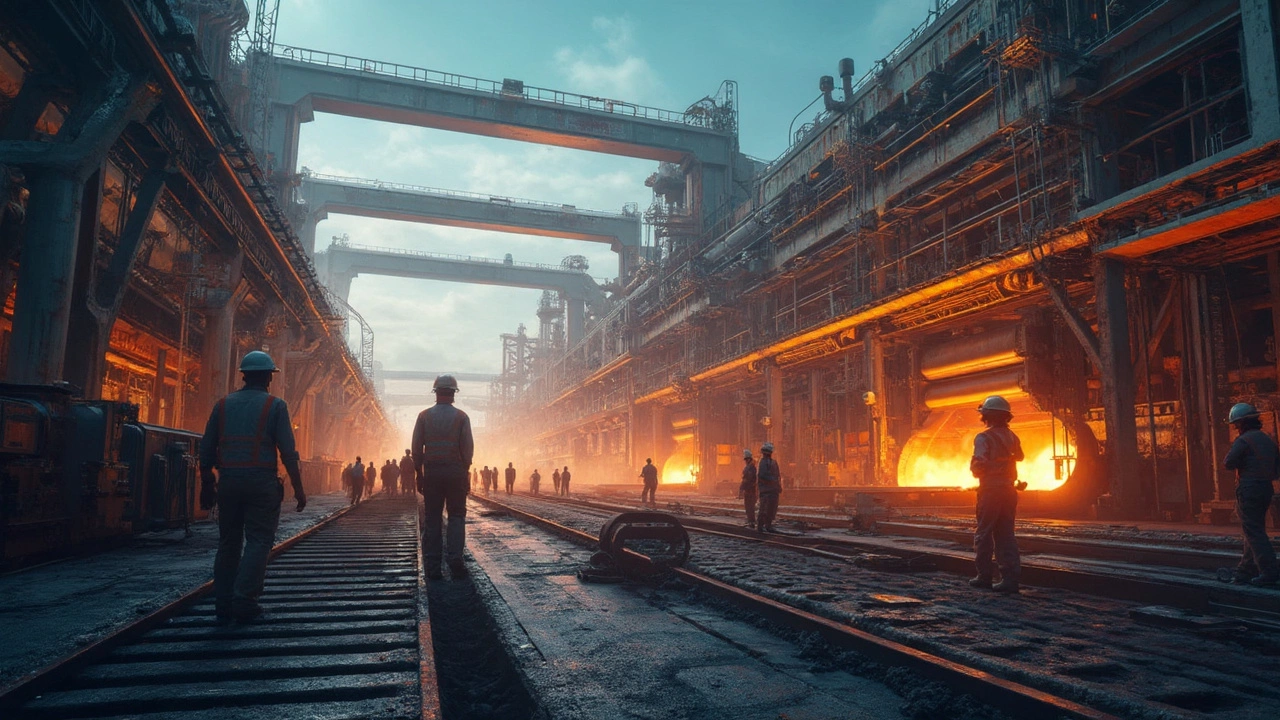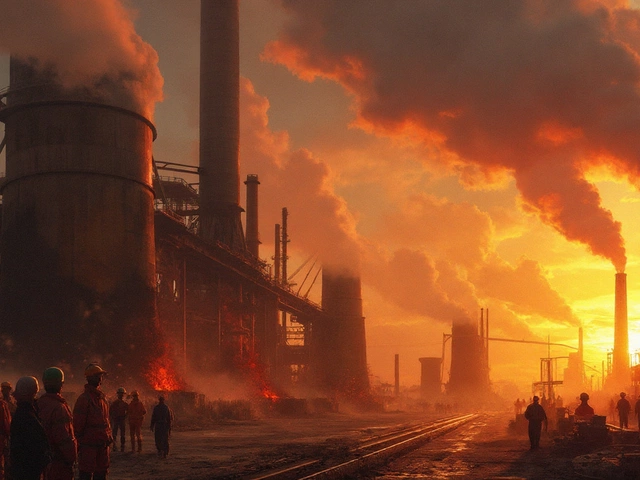US Industry Overview: Trends, Manufacturing, and Outsourcing
When looking at US industry, the network of economic activities that create goods and services across the United States. Also known as American industry, it fuels jobs, innovation, and global trade. Key sectors such as manufacturing, factory‑based production of everything from cars to electronics and steel, the core material for construction, transportation, and machinery shape its profile. Meanwhile, practices like outsourcing, shifting production to overseas facilities and its opposite, reshoring, bringing jobs and factories back home, constantly re‑write the rules. The US industry is therefore a living system of interlinked parts, each influencing the other.
Manufacturing: The Engine Behind US Economic Power
Manufacturing remains the backbone of the US industry. In 2024, factories generated over $2 trillion in output, supporting roughly 12 million jobs. From automotive giants on the Great Lakes to high‑tech electronics hubs in California, the sector covers a vast range of products. Its health directly affects the broader industry because every downstream service—logistics, finance, retail—relies on a steady flow of produced goods. Modern factories now blend robotics with human expertise, boosting productivity while cutting waste. This blend of technology and labor explains why manufacturing stays competitive despite higher domestic costs compared with some offshore locations.
One of the biggest shifts in recent years is the move toward advanced manufacturing. Companies invest in AI‑driven quality checks, 3‑D printing for rapid prototyping, and IoT sensors that monitor equipment health in real time. These innovations reduce downtime and allow US manufacturers to meet tighter delivery windows, a crucial advantage when customers demand speed and customization. The result is a more resilient sector that can adapt quickly to supply‑chain shocks, a quality the US industry values highly.
Beyond the big players, small‑ and medium‑sized factories contribute significantly to regional economies. They often specialize in niche products—custom furniture, precision tooling, specialty chemicals—providing the diversity that keeps the US industry flexible. Support programs from federal and state agencies, such as tax credits for equipment upgrades, help these firms stay competitive and maintain their role in the national production landscape.
Overall, manufacturing’s extensive reach means it touches almost every other component of the US industry, from raw material extraction to final consumer sales.
Outsourcing and reshoring are the two forces that keep reshaping where and how these factories operate.
Outsourcing has been a mainstay for decades, with roughly 30 % of US‑produced goods now sourced from abroad, according to recent trade data. Companies cite lower labor costs, proximity to raw material sources, and access to emerging markets as key motivators. However, the strategy also introduces risks: longer lead times, geopolitical tension, and quality inconsistencies. These concerns have sparked a resurgence of reshoring initiatives, especially in sectors where supply‑chain reliability is critical—think medical devices, aerospace components, and certain consumer electronics.
Reshoring is more than a buzzword; it’s a concrete policy and business trend. Federal incentives like the “Buy American” provisions, combined with rising wages in traditional offshore hubs, make domestic production financially attractive again. In 2023, reshoring accounted for an estimated $45 billion in new manufacturing investment, creating thousands of jobs across the Midwest and the South. Companies report faster time‑to‑market, better control over intellectual property, and a stronger brand story when they can say “Made in USA.” This shift also feeds back into the steel sector, as domestic manufacturers prefer locally sourced steel to reduce transport costs and carbon footprints.
Speaking of steel, the US steel industry illustrates the ebb and flow of the larger US industry. Once the world’s dominant producer, American steel faced decline as cheaper imports flooded the market. Today, a combination of modernized mills, stricter environmental standards, and targeted government support has sparked a modest revival. In 2024, domestic steel production rose by 4 % year‑over‑year, driven largely by automotive and construction demand. The sector’s health matters because steel is a primary input for both manufacturing and infrastructure projects, linking it directly to broader industry performance.
Moreover, the steel industry’s push toward greener processes—like electric‑arc furnaces powered by renewable energy—aligns with the US industry’s growing sustainability goals. Companies that adopt greener steel can market lower‑carbon products, a selling point that resonates with environmentally conscious consumers and corporate procurement policies.
Local manufacturing, a concept gaining traction in policy circles, highlights another layer of the US industry’s evolution. By keeping production close to end‑users, firms can cut shipping distances, lower emissions, and respond faster to market changes. This approach also spurs regional economic development, as new factories create high‑skill jobs and stimulate ancillary services such as logistics, maintenance, and training programs.
Studies show that regions with a strong local manufacturing base enjoy higher average wages and lower unemployment rates than neighboring areas lacking such facilities. The ripple effect extends to education, with community colleges tailoring curricula to meet the skill demands of nearby factories. This symbiosis between education, workforce development, and production helps the US industry stay competitive on a global stage.
All these pieces—manufacturing strength, outsourcing realities, reshoring momentum, steel’s comeback, and the push for local production—form a tightly woven tapestry that defines the US industry today. Below, you’ll find a curated collection of articles that dig deeper into each of these topics, from detailed supply‑chain analyses to practical guides on starting a factory. Whether you’re a business leader, a policy maker, or just curious about how America makes its stuff, the posts ahead will give you actionable insights and fresh data to help you navigate this dynamic landscape.

Ever wondered if anyone still makes steel in the USA? This article digs into the real deal behind American steel production, spotlighting where it’s made and who’s making it. You’ll get clear facts about steel plants operating today, how American steel stands up next to global competitors, and what it means for jobs and the economy. Plus, check out smart tips if you’re looking for steel products that are truly Made in USA. The info here is straight-up, practical, and answers the big question—Is any steel actually made in the USA? (Read More)







